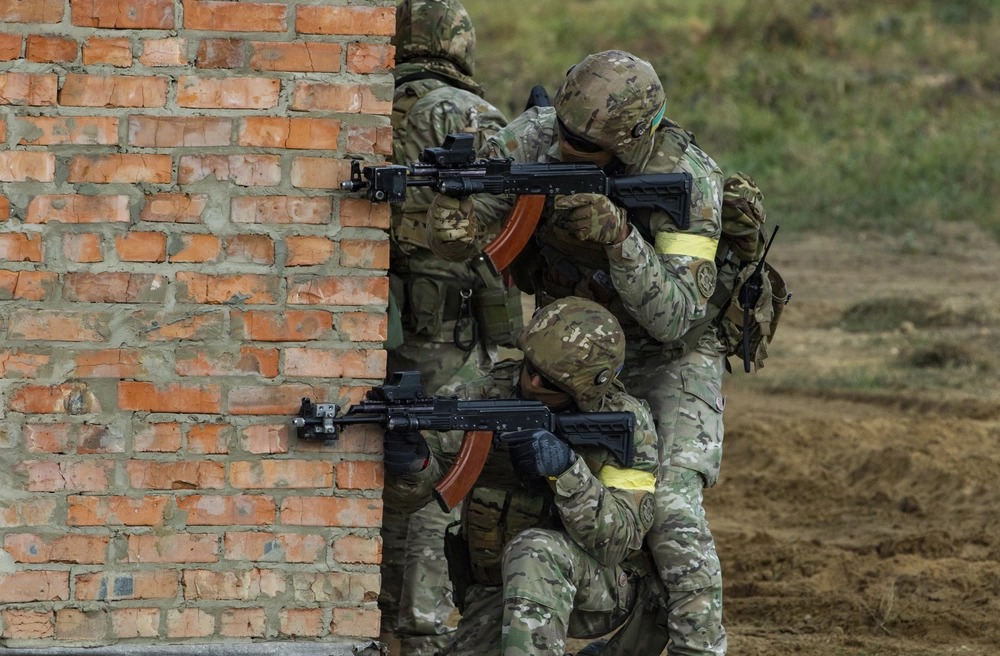In what may be a response to Ukraine’s successful and shocking operations in the Kursk region, the Russian military has heightened its state of readiness in Sevastopol to address the possibility of Ukrainian incursions.
On September 4, Sevastopol’s territorial defense forces and law enforcement agencies initiated large-scale exercises to simulate counter-sabotage efforts aimed at thwarting Ukrainian saboteurs.
Mikhail Razvozhaev, Governor of Sevastopol, reported that the first stage of the defensive exercises concluded successfully.
He described the initial phase as concentrating on the rapid acquisition of essential sites within Sevastopol, encompassing crucial road intersections and strategic positions. Razvozhaev emphasized the importance of seamless coordination between the participating forces.
“Today, actions are being worked out taking control of the territory of Sevastopol, the main road junctions, and the coherence of all units. Everything happened today at the signal of the head of the training normally, all posts were posted, the first stage was successful, during the day all other stages of well-coordinated work will be worked out,” Razvozhaev stated on his Telegram channel.
The exercises started at 8:00 a.m. Moscow time and covered several areas, including the Yalta ring, Fruktovoye, Andreevka, Orlovsky bridge, and Tylovoy. The goal was to enhance strategies to thwart enemy sabotage units, reflecting Russia’s apprehensions regarding potential Ukrainian offensives in Sevastopol, an area that has been a focal point for Ukrainian military operations.
The exercises are likely a response to Ukraine’s growing ability to conduct operations in enemy territory, exemplified by the recent successes in Kursk, where elite Ukrainian units played a major role in making significant territorial gains.
Ukrainian special operations units achieved strategic successes by taking advantage of the lightly defended Russian positions. Kursk has served as a critical logistical hub for Russia, housing essential railways, supply routes, and military installations, all of which have been targeted by Ukrainian forces.
According to reports, Ukrainian units conducted a variety of sabotage missions, including attacks on railways, fuel depots, and communication lines.

Additionally, they ambushed Russian military convoys and carried out precision strikes on key infrastructure, such as bridges. One of the most notable operations included the ambush and capture of Russian conscripts.
These tactics, employed by small, highly trained units operating behind enemy lines, disrupted Russia’s logistics and weakened its military capacity with minimal resources.
The effectiveness of these operations has raised alarms in Moscow, leading to increased readiness and counter-sabotage exercises in regions like Sevastopol.
This psychological pressure is a key element of Ukraine’s strategy and is designed to undermine the enemy’s morale. Captured Russian conscripts frequently attribute their surrender to the shock, speed, and relentless force of Kyiv’s elite troops, which left them overwhelmed and unable to resist.
Sevastopol Under Siege
Sevastopol, the primary base for Russia’s Black Sea Fleet in Crimea, was once regarded as the pride of the Russian Navy. However, Ukraine has consistently targeted Russian forces in the area, dealing significant blows to the fleet’s reputation and capabilities.
One of the most notable attacks occurred on September 22, 2023, when Ukrainian Storm Shadow/SCALP cruise missiles bypassed Russian air defenses and struck the Black Sea Fleet’s headquarters in Sevastopol.
Read More
Despite Russia’s frequent claims of repelling Ukrainian attacks, the effort to defend Crimea has strained its resources.
To protect the Kerch Bridge, a crucial connection to the Crimean Peninsula, Russian forces have undertaken extensive measures, including installing an underwater barrier using submerged ships and positioning missile defense systems, attack helicopters, and smoke generators.
The increasing pressure from Ukrainian missile strikes has forced Moscow to relocate several ships from Sevastopol, reducing the Black Sea Fleet’s effectiveness, particularly in maintaining blockades on Ukraine’s exports.
Experts suggest that Crimea is no longer the secure stronghold it once was. Ukraine’s access to advanced Western long-range missiles has enabled them to strike key Russian targets with significant impact.
While Russia’s air defenses still intercept most missile attacks, the shifting range of Ukrainian strikes threatens ships and anti-aircraft systems that were previously considered safe.
Meanwhile, Ukraine’s leadership has been vocal about its goal to fight its way to the Sea of Azov, aiming to sever Russia’s land bridge to Crimea.
These efforts have probably intensified Russia’s defensive preparations in Crimea as Moscow seeks to avoid another embarrassment similar to its losses in the Kursk region.
As a result, Russia is bolstering its defenses, determined to prevent further Ukrainian advances and to protect its strategically vital hold on Crimea.
- Contact the author at ashishmichel(at)gmail.com
- Follow EurAsian Times on Google News